Russia
From Wikipedia, the free encyclopedia
This article is about the current country. For other uses, see Russia (disambiguation).
"Russian Federation" redirects here. The Russian Soviet Federative Socialist Republic was also alternatively called the "Russian Federation".
| Russian Federation
Российская Федерация
Rossiyskaya Federatsiya | ||||||
|---|---|---|---|---|---|---|
| ||||||
| Anthem: "Государственный гимн Российской Федерации" "Gosudarstvenny gimn Rossiyskoy Federatsii" (transliteration) "State Anthem of the Russian Federation" | ||||||
|
| ||||||
| Capital and largest city | Moscow 55°45′N 37°37′E | |||||
| Official languages | Russian official throughout the country; 27 other languages co-official in various regions | |||||
| Ethnic groups(2010[1]) | ||||||
| Demonym | Russian | |||||
| Government | Federal semi-presidentialconstitutional republic | |||||
| - | President | Vladimir Putin | ||||
| - | Prime Minister | Dmitry Medvedev | ||||
| Legislature | Federal Assembly | |||||
| - | Upper house | Federation Council | ||||
| - | Lower house | State Duma | ||||
| Formation | ||||||
| - | Kievan Rus' | 862 | ||||
| - | Grand Duchy of Moscow | 1283 | ||||
| - | Tsardom of Russia | 16 January 1547 | ||||
| - | Russian Empire | 22 October 1721 | ||||
| - | Russian SFSR | 6 November 1917 | ||||
| - | Soviet Union | 10 December 1922 | ||||
| - | Russian Federation | 25 December 1991 | ||||
| - | Adoption of the current Constitution of Russia | 12 December 1993 | ||||
| Area | ||||||
| - | Total | 17,098,242 km2 (1st) 6,592,800 sq mi | ||||
| - | Water (%) | 13[2] (including swamps) | ||||
| Population | ||||||
| - | 2013 estimate | 143,657,134[3] (9th) | ||||
| - | Density | 8.4/km2 (217th) 21.5/sq mi | ||||
| GDP (PPP) | 2014 estimate | |||||
| - | Total | $2.678 trillion[4] (6th) | ||||
| - | Per capita | $18,996[4] (57th) | ||||
| GDP (nominal) | 2014 estimate | |||||
| - | Total | $2.215 trillion[4] (8th) | ||||
| - | Per capita | $15,717[4] (49th) | ||||
| Gini (2011) | 41.7[5] medium · 83rd | |||||
| HDI (2013) | high · 55th | |||||
| Currency | Russian ruble (RUB) | |||||
| Time zone | (UTC+3 to +12a) | |||||
| Date format | dd.mm.yyyy | |||||
| Drives on the | right | |||||
| Calling code | +7 | |||||
| ISO 3166 code | RU | |||||
| Internet TLD | ||||||
| a. | Excluding +5. | |||||
Russia  i/ˈrʌʃə/ or /ˈrʊʃə/ (Russian: Россия, tr. Rossiya, IPA: [rɐˈsʲijə] (
i/ˈrʌʃə/ or /ˈrʊʃə/ (Russian: Россия, tr. Rossiya, IPA: [rɐˈsʲijə] ( )), also officially known as the Russian Federation[7] (Russian: Российская Федерация, tr. Rossiyskaya Federatsiya,IPA: [rɐˈsʲijskəjə fʲɪdʲɪˈrat͡sɨjə] (
)), also officially known as the Russian Federation[7] (Russian: Российская Федерация, tr. Rossiyskaya Federatsiya,IPA: [rɐˈsʲijskəjə fʲɪdʲɪˈrat͡sɨjə] ( )), is a country situated in northern Eurasia.[8] It is a federal semi-presidential republic, comprising 83 federal subjects. From northwest to southeast, Russiashares land borders with Norway, Finland, Estonia, Latvia, Lithuania and Poland (both with Kaliningrad Oblast), Belarus, Ukraine, Georgia, Azerbaijan, Kazakhstan, China, Mongolia, and North Korea. It shares maritime borders with Japan by the Sea of Okhotsk and the U.S. state of Alaska across the Bering Strait. At 17,075,400 square kilometres (6,592,800 sq mi), Russia is the largest country in the world, covering more than one-eighth of the Earth's inhabited land area. Russia is also the world's ninth most populous nation with 143 million people as of 2012.[9] Extending across the entirety of northern Asia and much of Eastern Europe, Russia spans nine time zones and incorporates a wide range of environments and landforms.
)), is a country situated in northern Eurasia.[8] It is a federal semi-presidential republic, comprising 83 federal subjects. From northwest to southeast, Russiashares land borders with Norway, Finland, Estonia, Latvia, Lithuania and Poland (both with Kaliningrad Oblast), Belarus, Ukraine, Georgia, Azerbaijan, Kazakhstan, China, Mongolia, and North Korea. It shares maritime borders with Japan by the Sea of Okhotsk and the U.S. state of Alaska across the Bering Strait. At 17,075,400 square kilometres (6,592,800 sq mi), Russia is the largest country in the world, covering more than one-eighth of the Earth's inhabited land area. Russia is also the world's ninth most populous nation with 143 million people as of 2012.[9] Extending across the entirety of northern Asia and much of Eastern Europe, Russia spans nine time zones and incorporates a wide range of environments and landforms.
The nation's history began with that of the East Slavs, who emerged as a recognizable group in Europe between the 3rd and 8th centuries AD.[10] Founded and ruled by a Varangian warrior elite and their descendants, the medieval state of Rus arose in the 9th century. In 988 it adopted Orthodox Christianity from the Byzantine Empire,[11] beginning the synthesis of Byzantine and Slavic cultures that defined Russian culture for the next millennium.[11] Rus' ultimately disintegrated into a number of smaller states; most of the Rus' lands were overrun by the Mongol invasion and became tributaries of the nomadic Golden Horde.[12] The Grand Duchy of Moscow gradually reunified the surrounding Russian principalities, achieved independence from the Golden Horde, and came to dominate the cultural and political legacy of Kievan Rus'. By the 18th century, the nation had greatly expanded through conquest, annexation, and exploration to become the Russian Empire, which was the third largest empire in history, stretching from Poland in Europe to Alaska in North America.[13][14]
Following the Russian Revolution, the Russian Soviet Federative Socialist Republic became the largest and leading constituent of the Soviet Union, the world's first constitutionally socialist stateand a recognized superpower,[15] which played a decisive role in the Allied victory in World War II.[16][17] The Soviet era saw some of the most significant technological achievements of the 20th century, including the world's first spacecraft, and the first astronaut. The Russian Federation became the successor state of the Russian SFSR following the dissolution of the Soviet Union in 1991, and is recognized as the continuing legal personality of the Union state.[18]
The Russian economy ranks as the eighth largest by nominal GDP and sixth largest by purchasing power parity.[19] Russia's extensive mineral and energy resources, the largest reserves in the world,[20] have made it one of the largest producers of oil and natural gas globally.[21][22] The country is one of the five recognized nuclear weapons states and possesses the largest stockpile of weapons of mass destruction.[23] Russia is a great power and a permanent member of the United Nations Security Council, a member of the G8, G20, the Council of Europe, the Asia-Pacific Economic Cooperation, the Shanghai Cooperation Organisation, the Eurasian Economic Community, the Organisation for Security and Cooperation in Europe (OSCE), and the World Trade Organisation (WTO) and the leading member of the Commonwealth of Independent States.
Peter the Great
From Wikipedia, the free encyclopedia
(Redirected from Peter I of Russia)
This article is about the Russian monarch. For other uses, see Peter the Great (disambiguation).
|
| Peter the Great | |
|---|---|
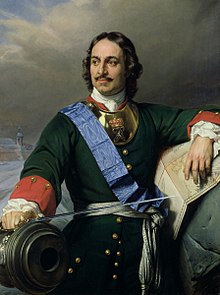 | |
| Reign | 2 November 1721 – 8 February 1725 |
| Predecessor | Himself as Tsar |
| Successor | Catherine I |
| Reign | 7 May 1682 – 2 November 1721 co-reign, with Ivan V, 1682–1696 |
| Coronation | 25 June 1682 |
| Predecessor | Feodor III |
| Successor | Himself as Emperor |
| Consort | |
| Issue | |
| Full name | |
| Peter Alekseyevich Romanov | |
| House | House of Romanov |
| Father | Alexis |
| Mother | Natalya Naryshkina |
| Born | 9 June 1672 Moscow |
| Died | 8 February 1725 (aged 52) Saint Petersburg |
| Burial | Peter and Paul Cathedral |
| Signature | |
| Religion | Russian Orthodox Christian |
Peter the Great, Peter I or Pyotr Alexeyevich (Russian: Пётр Алексе́евич, Пётр I, Pyotr I, or Пётр Вели́кий, Pyotr Velikiy) (9 June [O.S. 30 May] 1672 – 8 February [O.S. 28 January] 1725)[a] ruled theTsardom of Russia and later the Russian Empire from 7 May [O.S. 27 April] 1682 until his death, jointly ruling before 1696 with his half-brother. In numerous successful wars he expanded the Tsardom into a huge empire that became a major European power. According to historian James Cracraft, he led a cultural revolution that replaced some of the traditionalist and medieval social and political system with a modern, scientific, Europe-oriented, and rationalist system.[1]
Life
Early years
From an early age, Peter's education (commissioned by Tsar Alexis I) was put in the hands of several tutors, most notably Nikita Zotov, Patrick Gordon, and Paul Menesius. On 29 January 1676, Tsar Alexis died, leaving the sovereignty to Peter's elder half-brother, the weak and sickly Feodor III. Throughout this period, the government was largely run by Artamon Matveev, an enlightened friend of Alexis, the political head of the Naryshkin family and one of Peter's greatest childhood benefactors. This position changed when Feodor died in 1682. As Feodor did not leave any children, a dispute arose between the Naryshkin and Miloslavsky families over who should inherit the throne. Peter's other half-brother, Ivan V, was next in line for the throne, but he was chronically ill and of infirm mind. Consequently, the Boyar Duma (a council of Russian nobles) chose the 10-year-old Peter to become Tsar with his mother as regent. This arrangement was brought before the people of Moscow, as ancient tradition demanded, and was ratified. Sophia Alekseyevna, one of Alexis' daughters from his first marriage, led a rebellion of the Streltsy (Russia's elite military corps) in April–May 1682. In the subsequent conflict some of Peter's relatives and friends were murdered, including Matveev, and Peter witnessed some of these acts of political violence.[2]
The Streltsy made it possible for Sophia, the Miloslavskys (the clan of Ivan) and their allies, to insist that Peter and Ivan be proclaimed joint Tsars, with Ivan being acclaimed as the senior. Sophia acted as regent during the minority of the sovereigns and exercised all power. For seven years, she ruled as an autocrat. A large hole was cut in the back of the dual-seated throne used by Ivan and Peter. Sophia would sit behind the throne and listen as Peter conversed with nobles, while feeding him information and giving him responses to questions and problems. This throne can be seen in the Kremlin Armouryin Moscow.
Peter was not particularly concerned that others ruled in his name. He engaged in such pastimes as shipbuilding and sailing, as well as mock battles with his toy army. Peter's mother sought to force him to adopt a more conventional approach, and arranged his marriage to Eudoxia Lopukhina in 1689.[3] The marriage was a failure, and ten years later Peter forced his wife to become a nun and thus freed himself from the union.
By the summer of 1689, Peter planned to take power from his half-sister Sophia, whose position had been weakened by two unsuccessful Crimeancampaigns. When she learned of his designs, Sophia conspired with the leaders of the Streltsy, who continually aroused disorder and dissent. Peter, warned by the Streltsy, escaped in the middle of the night to the impenetrable monastery of Troitse-Sergiyeva Lavra; there he slowly gathered adherents who perceived he would win the power struggle. She was eventually overthrown, with Peter I and Ivan V continuing to act as co-tsars. Peter forced Sophia to enter a convent, where she gave up her name and her position as a member of the royal family.
Still, Peter could not acquire actual control over Russian affairs. Power was instead exercised by his mother, Natalya Naryshkina. It was only when Nataliya died in 1694 that Peter became an independent sovereign.[4] Formally, Ivan V remained a co-ruler with Peter, although he was ineffective. Peter became the sole ruler when Ivan died in 1696.
Peter grew to be extremely tall as an adult, especially for the time period. Standing at 6 ft 8 in (203 cm) in height, the Russian tsar was literally head and shoulders above his contemporaries both in Russia and throughout Europe.[5] Peter, however, lacked the overall proportional heft and bulk generally found in a man that size. Both Peter's hands and feet were small, and his shoulders were narrow for his height; likewise, his head was small for his tall body. Added to this were Peter's noticeable facial tics, and he may have suffered from petit mal, a form of epilepsy.[6]
Filippo Baltari, a young Italian visitor to Peter's court, wrote:
"Tsar Peter was tall and thin, rather than stout. His hair was thick, short, and dark brown; he had large eyes, black with long lashes, a well-shaped mouth, but the lower lip was slightly disfigured ... For his great height, his feet seemed very narrow. His head was sometimes tugged to the right by convulsions."
Few contemporaries, either in or outside of Russia, commented on Peter's great height or appearance.
Children
Peter the Great had two wives, with whom he had fourteen children; three of them survived to adulthood. His eldest child and heir, Alexei, was suspected of being involved in a plot to overthrow the Emperor. Alexei was tried and confessed under torture during questioning conducted by a secular court. He was convicted and sentenced to be executed. The sentence could be carried out only with Peter's signed authorization, and Alexei died in prison, as Peter hesitated before making the decision. Alexei's death most likely resulted from injuries suffered during his torture.[7]
Early reign
Peter implemented sweeping reforms aimed at modernizing Russia. Heavily influenced by his advisors from Western Europe, Peter reorganized the Russian army along modern lines and dreamed of making Russia a maritime power. He faced much opposition to these policies at home, but brutally suppressed any and all rebellions against his authority: Streltsy, Bashkirs, Astrakhan, and the greatest civil uprising of his reign, the Bulavin Rebellion. Peter implemented social modernization in an absolute manner by requiring courtiers, state officials, and the military to shave their beards and adopt modern clothing styles.[8] One means of achieving this end was the introduction of taxes for long beards and robes.[9]
To improve his nation's position on the seas, Peter sought to gain more maritime outlets. His only outlet at the time was the White Sea at Arkhangelsk. The Baltic Sea was at the time controlled bySweden in the north, while the Black Sea was controlled by the Ottoman Empire in the south. Peter attempted to acquire control of the Black Sea; to do so he would have to expel the Tatars from the surrounding areas. As part of an agreement with Poland which ceded Kiev to Russia, Peter was forced to wage war against the Crimean Khan and against the Khan's overlord, the Ottoman Sultan. Peter's primary objective became the capture of the Ottoman fortress of Azov, near the Don River. In the summer of 1695 Peter organized the Azov campaigns to take the fortress, but his attempts ended in failure. Peter returned to Moscow in November of that year and began building a large navy. He launched about thirty ships against the Ottomans in 1696, capturing Azov in July of that year. On 12 September 1698, Peter officially founded the first Russian Navy base, Taganrog.
Peter knew that Russia could not face the Ottoman Empire alone. In 1697 he traveled incognito to Europe on an 18-month journey with a large Russiandelegation–the so-called "Grand Embassy"—to seek the aid of the European monarchs.[10] Peter's hopes were dashed; France was a traditional ally of the Ottoman Sultan, and Austria was eager to maintain peace in the east while conducting its own wars in the west. Peter, furthermore, had chosen the most inopportune moment; the Europeans at the time were more concerned about who would succeed the childless Spanish King Charles II than about fighting the Ottoman Sultan.
The "Grand Embassy", although failing to complete the mission of creating an anti-Ottoman alliance, continued. While visiting the Netherlands, Peter learned much about life in Western Europe. He studied shipbuilding in Zaandam (the house he lived in is now a museum, the Tsar Peter house) and Amsterdam, where he visited, among others, the upper-class de Wilde family. Jacob de Wilde, a collector-general with the Admiralty of Amsterdam, had a well-known collection of art and coins, and de Wilde's daughter Maria de Wilde made an engraving of the meeting between Peter and her father, providing visual evidence of "the beginning of the West European classical tradition in Russia".[11] According to Roger Tavernier, Peter the Great later acquired de Wilde's collection.[12] Thanks to the mediation of Nicolaas Witsen, mayor of Amsterdam and expert on Russia, the Tsar was given the opportunity to gain practical experience in the largest shipyard in the world, belonging to theDutch East India Company, for a period of four months. The Tsar helped with the construction of an East Indiaman especially laid down for him: Peter and Paul. During his stay the Tsar engaged many skilled workers such as builders of locks, fortresses, shipwrights, and seamen—including Cornelis Cruys, a vice-admiral who became, under Franz Lefort, the Tsar's advisor in maritime affairs. He later put his knowledge of shipbuilding to use in helping build Russia's navy.[13] Peter paid a visit to Frederik Ruysch, who taught him how to draw teeth and catch butterflies. Ludolf Bakhuysen, a painter of seascapes and Jan van der Heyden the inventor of the fire hose, received Peter, who was keen to learn and pass on his knowledge to his countrymen. On 16 January 1698 Peter organized a farewell party and invited Johan Huydecoper van Maarsseveen, who had to sit between Lefort and the Tsar and drink.
In England Peter met with King William III, visited Greenwich and Oxford, was painted by Sir Godfrey Kneller, and saw a Royal Navy Fleet Review atDeptford. He travelled to the city of Manchester to learn the techniques of city-building he would later use to great effect at Saint Petersburg. The Embassy next went to Leipzig, Dresden, and Vienna. He spoke with August the Strong and Leopold I, Holy Roman Emperor.
Peter's visit was cut short in 1698, when he was forced to rush home by a rebellion of the Streltsy. The rebellion was, however, easily crushed before Peter returned home from England; of the Tsar's troops, only one was killed. Peter nevertheless acted ruthlessly towards the mutineers. Over 1,200 of the rebels were tortured and executed, and Peter ordered that their bodies be publicly exhibited as a warning to future conspirators.[14] The Streltsy were disbanded, and the individual they sought to put on the Throne—Peter's half-sister Sophia—was forced to become a nun.
Also, upon his return from his European tour, Peter sought to end his unhappy marriage. He divorced the Tsaritsa, Eudoxia Lopukhina. The Tsaritsa had borne Peter three children, although only one, the Tsarevich Alexei, had survived past his childhood.
In 1698 Peter sent a delegation to Malta under boyar Boris Petrovich Sheremetyev, to observe the training and abilities of the Knights of Malta and their fleet. Sheremetyev investigated the possibility of future joint ventures with the Knights, including action against the Turks and the possibility of a future Russian naval base.[15]
Peter's visits to the West impressed upon him the notion that European customs were in several respects superior to Russian traditions. He commanded all of his courtiers and officials to cut off their long beards—causing his Boyars, who were very fond of their beards, great upset[16]—and wear European clothing. Boyars who sought to retain their beards were required to pay an annual beard taxof one hundred rubles. He also sought to end arranged marriages, which were the norm among the Russian nobility, because he thought such a practice was barbaric and led to domestic violence, since the partners usually resented each other.[17]
In 1699 Peter changed the date of the celebration of the new year from 1 September to 1 January. Traditionally, the years were reckoned from the purported creation of the World, but after Peter's reforms, they were to be counted from the birth of Christ. Thus, in the year 7207 of the old Russian calendar, Peter proclaimed that the Julian Calendar was in effect and the year was 1700.[18]
Great Northern War
Main article: Great Northern War
Peter made a temporary peace with the Ottoman Empire that allowed him to keep the captured fort of Azov, and turned his attention to Russian maritime supremacy. He sought to acquire control of the Baltic Sea, which had been taken by the Swedish Empire a half-century earlier. Peter declared war on Sweden, which was at the time led by King Charles XII. Sweden was also opposed byDenmark-Norway, Saxony, and the Polish-Lithuanian Commonwealth.
Russia was ill-prepared to fight the Swedes, and their first attempt at seizing the Baltic coast ended in disaster at the Battle of Narva in 1700. In the conflict, the forces of Charles XII used a blinding snowstorm to their advantage. After the battle, Charles XII decided to concentrate his forces against the Polish-Lithuanian Commonwealth, which gave Peter time to reorganize the Russian army. At the end of February 1701 he met with Polish King Augustus II the Strong in Biržai, where the rulers, after several days of drinking, arranged a cannon shooting competition, won by the Polish King.[19]
As the Poles and Lithuanians fought against the Swedes, Peter founded the city of Saint Petersburg (Germanically named after Saint Peter the Apostle) in Ingermanland (province of Swedish empire, which he had captured) in 1703. He forbade the building of stone edifices outside Saint Petersburg, which he intended to become Russia's capital, so that all stonemasons could participate in the construction of the new city. He also took Martha Skavronskaya as a mistress. Martha converted to the Russian Orthodox Church and took the name Catherine, allegedly marrying Peter in secret in 1707. Peter valued Catherine and married her again (this time officially) at Saint Isaac's Cathedral in Saint Petersburg on 9 February 1712.
Following several defeats, the Polish King August II abdicated in 1706. Swedish king Charles XII turned his attention to Russia, invading it in 1708. After crossing into Russia, Charles defeated Peter at Golovchin in July. In the Battle of Lesnaya, Charles suffered his first loss after Peter crushed a group of Swedish reinforcements marching from Riga. Deprived of this aid, Charles was forced to abandon his proposed march on Moscow.[citation needed]
Charles XII refused to retreat to Poland or back to Sweden, instead invading Ukraine. Peter withdrew his army southward, destroying along the way any property that could assist the Swedes. Deprived of local supplies, the Swedish army was forced to halt its advance in the winter of 1708–1709. In the summer of 1709, they resumed their efforts to capture Ukraine, culminating in the Battle of Poltava on 27 June. The battle was a decisive defeat for the Swedish forces, ending Charles' campaign in Ukraine and forcing him into exile in the Ottoman Empire. In Poland, August II was restored as King.
Peter, overestimating the support he would receive from his Balkan allies, attacked the Ottoman Empire, initiating the Russo-Turkish War of 1710.[20] Normally, the Boyar Duma would have exercised power during his absence. Peter, however, mistrusted the boyars; he instead abolished the Duma and created a Senate of ten members. Peter's campaign in the Ottoman Empire was disastrous, and in the ensuing peace treaty, Peter was forced to return the Black Sea ports he had seized in 1697.[20] In return, the Sultan expelled Charles XII, but Russia was forced to guarantee safe passage to the Swedish king,[20] who in the end traveled back to Sweden through Germany.
Peter's northern armies took the Swedish province of Livonia (the northern half of modern Latvia, and the southern half of modern Estonia), driving the Swedes into Finland. In 1714 the Russian fleet won the Battle of Gangut. Most of Finland was occupied by the Russians. In 1716 and 1717, the Tsar revisited the Netherlands, and went to see Herman Boerhaave. He continued his travel to theAustrian Netherlands and France. The Tsar's navy was so powerful that the Russians could penetrate Sweden. Peter also obtained the assistance of the Electorate of Hanover and the Kingdom of Prussia. Still, Charles XII refused to yield, and not until his death in battle in 1718 did peace become feasible. After the battle near Åland, Sweden made peace with all powers but Russia by 1720. In 1721 the Treaty of Nystad ended what became known as the Great Northern War. Russia acquired Ingria, Estonia, Livonia, and a substantial portion of Karelia. In turn, Russia paid two million Riksdaler and surrendered most of Finland. The Tsar retained some Finnish lands close to Saint Petersburg, which he had made his capital in 1712.
Later years
Peter's last years were marked by further reform in Russia. On 22 October 1721, soon after peace was made with Sweden, he was officially proclaimed Emperor of All Russia. Some proposed that he take the title Emperor of the East, but he refused. Gavrila Golovkin, the State Chancellor, was the first to add "the Great, Father of His Country, Emperor of All the Russias" to Peter's traditional title Tsar following a speech by the archbishop of Pskov in 1721.
Peter's imperial title was recognized by Augustus II of Poland, Frederick William I of Prussia, and Frederick I of Sweden, but not by the other European monarchs. In the minds of many, the word emperorconnoted superiority or pre-eminence over kings. Several rulers feared that Peter would claim authority over them, just as the Holy Roman Emperor had claimed suzerainty over all Christian nations.
During Peter's reign the Russian Orthodox Church was reformed. The traditional leader of the Church was the Patriarch of Moscow. In 1700, when the office fell vacant, Peter refused to name a replacement, allowing the Patriarch's Coadjutor (or deputy) to discharge the duties of the office. In 1721 Peter followed the advice of Feofan Prokopovich and created the Holy Synod, a council of ten clergymen, to take the place of the Patriarch and Coadjutor. Peter implemented a law that stipulated that no Russian man could join a monastery before the age of 50. He felt that too many able Russian men were being wasted on clerical work when they could be joining his new and improved army.[21] In 18th-century Russia, few people lived to over a half century; therefore very few men became monks during Peter's reign, much to the dismay of the Russian Church.
In 1718 Peter investigated why the ex Swedish province of Livonia was so orderly. He discovered that the Swedes spent as much administering Livonia (300 times smaller than his empire) as he spent on the entire Russian bureaucracy. He was forced to dismantle the province's government.[22]
In 1722 Peter created a new order of precedence known as the Table of Ranks. Formerly, precedence had been determined by birth. To deprive the Boyars of their high positions, Peter directed that precedence should be determined by merit and service to the Emperor. The Table of Ranks continued to remain in effect until the Russian monarchy was overthrown in 1917. Peter decided that all of the children of the nobility should have some early education, especially in the areas of sciences. Therefore, on 28 February 1714, he issued a decree calling for compulsory education, which dictated that all Russian 10- to 15-year-old children of the nobility, government clerks, and lesser-ranked officials, must learn basic mathematics and geometry, and should be tested on it at the end of their studies.[23]
Peter introduced new taxes to fund improvements in Saint Petersburg. He abolished the land tax and household tax, and replaced them with a poll tax. The taxes on land and on households were payable only by individuals who owned property or maintained families; the new head taxes, however, were payable by serfs and paupers.
In 1724 Peter had his second wife, Catherine, crowned as Empress, although he remained Russia's actual ruler. All of Peter's male children had died—the eldest son, Alexei, had been tortured and killed on Peter's orders in 1718 because he had disobeyed his father and opposed official policies. Alexei's mother Eudoxia had also been punished; she was dragged from her home and tried on false charges of adultery. A similar fate befell Peter's mistress, Anna Mons, in 1704.
In 1725 construction of Peterhof, a palace near Saint Petersburg, was completed. Peterhof (Dutch for "Peter's Court") was a grand residence, becoming known as the "Russian Versailles".
Death
In the winter of 1723, Peter, whose overall health was never robust, began having problems with his urinary tract and bladder. In the summer of 1724 a team of doctors performed surgery releasing upwards of four pounds of blocked urine. Peter remained bedridden until late autumn. In the first week of October, restless and certain he was cured, Peter began a lengthy inspection tour of various projects. According to legend, in November, at Lakhta along the Finnish Gulf to inspect some ironworks, Peter saw a group of soldiers drowning near shore and, wading out into near-waist deep water, came to their rescue.[24]
This icy water rescue is said to have exacerbated Peter's bladder problems and caused his death. The story, however, has been viewed with skepticism by some historians, pointing out that the German chronicler Jacob von Stählin is the only source for the story, and it seems unlikely that no one else would have documented such an act of heroism. This, plus the interval of time between these actions and Peter's death seems to preclude any direct link.
In early January 1725, Peter was struck once again with uremia. Legend has it that before lapsing into unconsciousness Peter asked for a paper and pen and scrawled an unfinished note that read: "Leave all to ..." and then, exhausted by the effort, asked for his daughter Anna to be summoned.[b]
Peter died between four and five in the morning 8 February 1725. An autopsy revealed his bladder to be infected with gangrene.[6] He was fifty-two years, seven months old when he died, having reigned forty-two years.
....................
PETER THE GREAT WAS INDEED FOR RUSSIA, GREAT IN SOME WAYS AS THE ABOVE ARTICLE SHOWS.
THE OPENING OF THE 2014 OLYMPIC GAMES IN SOCHI, RUSSIA, WAS INDEED BOTH SPECTACULAR AND BEAUTIFUL.
RUSSIA IS PART OF THE CAUCASIAN PEOPLES OF THE WORLD.
IN THE RECENT PAST AND TODAY, THEY ARE IN RELIGION DOMINANTLY ROMAN CATHOLIC.
THE FALL AND BREAK-UP OF THE "RUSSIAN EMPIRE" - THE MOVE AWAY FROM STALINISM AND INTO A MORE OPEN SOCIETY
WAS IN MY VIEW DUE TO THE GREATNESS OF "THE FREE SPIRIT" OF GORBACHEV.
RUSSIA IN BIBLE PROPHECY: THERE WILL NEVER BE A WAR BETWEEN RUSSIA AND THE WEST, SPECIFICALLY BRITAIN AND THE USA. THE BOOK OF REVELATION SHOWS IN CHAPTER 9 THE POWER OF THE EAST, PROBABLY INDEED INCLUDING RUSSIA, WILL COME AGAINST THE BEAST EUROPE HOLY ROMAN EMPIRE POWER. IN REVELATION 16 THE KINGS OF THE EAST COME TO BE A PART OF THE ARMY IN THE BATTLE OF ARMAGEDDON, WHICH CHRIST AND THE ARMIES OF HEAVEN WILL DESTROY ON HIS RETURN TO EARTH. CHAPTER 38 AND 39 OF EZEKIEL ARE FOR AFTER THE RETURN OF CHRIST, WHEN ALL THE TRIBES OF ISRAEL ARE GATHERED BACK TO THE HOLY LAND, AND ARE LIVING IN PROSPERITY AND UN-WALLED TOWNS, NO DEFENSE OF ANY KIND BUT CHRIST JESUS AND THE SAINTS.
THE CAVE-MAN TYPE ARMY THAT COMES TO TAKE A SPOIL WILL BE DESTROYED BY GOD AS FORETOLD IN THOSE CHAPTERS OF EZEKIEL.
Keith Hunt
THE CAVE-MAN TYPE ARMY THAT COMES TO TAKE A SPOIL WILL BE DESTROYED BY GOD AS FORETOLD IN THOSE CHAPTERS OF EZEKIEL.
Keith Hunt




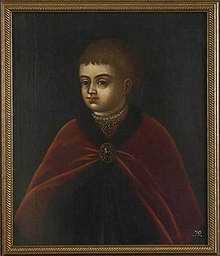
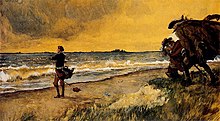
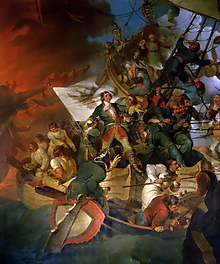

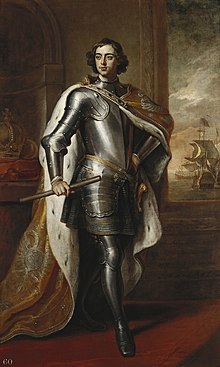

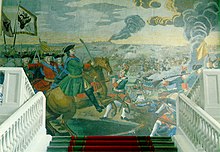




No comments:
Post a Comment